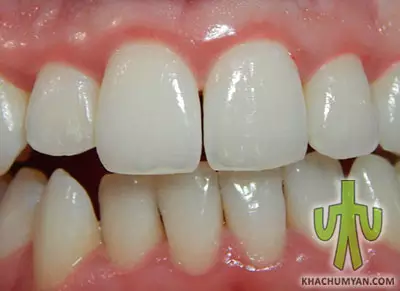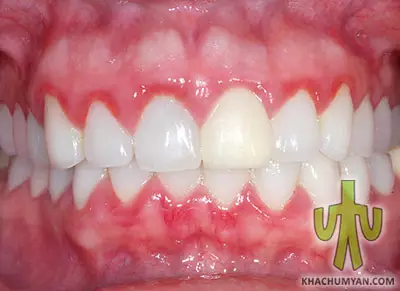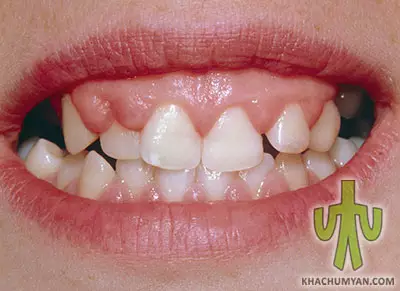 What is gingivitis? Gingivitis - an inflammatory disease of the periodontium, which arises from both local and general factors and progresses without damage to the gingival ligament.
What is gingivitis? Gingivitis - an inflammatory disease of the periodontium, which arises from both local and general factors and progresses without damage to the gingival ligament.
Gingivitis can be of the following types:
- Catarrhal
- Hypertrophic
- Acute Necrotizing Ulcerative Gingivitis (ANUG)
Catarrhal
 It is the most common type of gingivitis. There is gingival hyperemia (redness), slight swelling of the gums, characterized by the presence of soft and hard sediments. Patients report bleeding gums when brushing their teeth and inflammation.
It is the most common type of gingivitis. There is gingival hyperemia (redness), slight swelling of the gums, characterized by the presence of soft and hard sediments. Patients report bleeding gums when brushing their teeth and inflammation.
Hypertrophic

It is less common than catarrhal gingivitis. Hypertrophic gingivitis is very common in disorders of the endocrine system.
There are also:
- Pregnancy gingivitis
- Juvenile gingivitis
- Diabetic gingivitis
Gingival enlargement (hyperplasia) is seen; hence it got its name.
In addition to enlargement, a bluish color can be noticed in the gums. Also, there can be seen bleeding, abscess, bad breath, false pathological pockets, soft, hard plaque.
Acute Necrotizing Ulcerative Gingivitis (ANUG)
 This type of gingivitis occurs in the background of the so-called Vincent ulcerative stomatitis and is considered a clinical manifestation of this disease. Inflammation of the mucous membranes of the mouth, necrosis of the gums, bleeding, unpleasant odor from the mouth are seen. It usually appears in the lack of good oral hygiene and more often occurs among people aged 17-30. It is often accompanied by influenza, angina, blood diseases, AIDS, tuberculosis.
This type of gingivitis occurs in the background of the so-called Vincent ulcerative stomatitis and is considered a clinical manifestation of this disease. Inflammation of the mucous membranes of the mouth, necrosis of the gums, bleeding, unpleasant odor from the mouth are seen. It usually appears in the lack of good oral hygiene and more often occurs among people aged 17-30. It is often accompanied by influenza, angina, blood diseases, AIDS, tuberculosis.
Treatment of gingivitis
Different treatment methods are chosen depending on the severity of the disease starting from professional oral hygiene to various surgeries.



